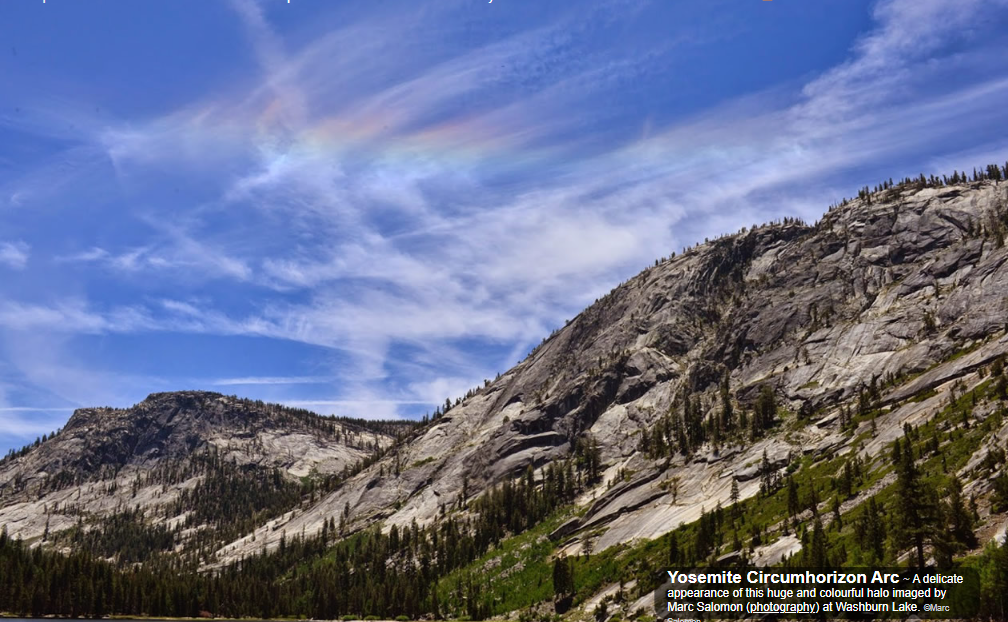Florida Fogbow
Florida Fogbow: A Rare Atmospheric Phenomenon
The Florida Fogbow is a mesmerizing atmospheric optical phenomenon that occurs when sunlight interacts with water droplets suspended in fog. It is a rare occurrence that delights and captivates those lucky enough to witness it. Similar to a rainbow, the fogbow displays a range of colors, but with a fainter and more ghostly appearance. In this article, we will explore the fascinating characteristics of the Florida Fogbow and delve into the science behind its formation.
What is a Fogbow?
A fogbow, also known as a white rainbow or ghost rainbow, is essentially a colorless or pale rainbow that appears in foggy conditions. Unlike a regular rainbow, which forms from the refraction and reflection of sunlight on raindrops, a fogbow is created by the diffraction of sunlight on tiny water droplets present in fog. These droplets are much smaller than raindrops, leading to a different optical effect.
The Enchanting Appearance of the Florida Fogbow
The Florida Fogbow has a unique and enchanting appearance. It usually appears as a faint white or gray arc in the sky, stretching horizontally across the horizon. Due to the smaller droplet size in fog, the colors of the fogbow are not as vibrant as those of a traditional rainbow. Instead, they appear washed out and less defined. The inner edge of the fogbow tends to be brighter, while the outer edge fades into the background fog.
Formation of the Florida Fogbow
The formation of the Florida Fogbow follows the same principles as other fogbows. When sunlight passes through water droplets suspended in fog, it undergoes diffraction. This causes the light to bend and spread out, resulting in the formation of an arc. However, unlike rainbows that form when sunlight is refracted and reflected by raindrops, fogbows are formed through diffraction alone.
Ideal Conditions for the Florida Fogbow
To witness a Florida Fogbow, specific conditions must be met. The most crucial factor is the presence of fog or mist, which provides the necessary water droplets for diffraction. Additionally, the sun must be relatively high in the sky, typically above 58 degrees. This ensures that the sunlight can enter the side faces of the hexagonal ice crystals within the fog and create the fogbow effect. If the sun is lower, the light may be internally reflected instead of forming a fogbow.
The Role of Ice Crystals in Fogbow Formation
While water droplets are essential for fogbow formation, the presence of ice crystals can enhance the phenomenon. When ice crystals are present in the fog, they can interact with sunlight in a similar way to water droplets. The hexagonal shape of the ice crystals allows sunlight to enter through their side faces and exit through their lower faces, resulting in the formation of a colorful circumhorizon arc (CHA). CHAs are rare and breathtaking optical displays that occur when the sun is relatively high in the sky.
Capturing the Beauty of the Florida Fogbow
Photographing a Florida Fogbow can be a challenging task due to its faint and elusive nature. The subtle colors and delicate appearance require precise camera settings and optimal lighting conditions. To capture the full beauty of a fogbow, it is best to use a polarizing filter to reduce glare and enhance contrast. Additionally, positioning oneself at an angle to the sun can help maximize the visibility of the fogbow.
Similar Atmospheric Optical Phenomena
The Florida Fogbow shares similarities with other atmospheric optical phenomena, such as rainbows, halos, and sundogs. While rainbows are formed by raindrops instead of fog droplets, they both rely on light refraction and reflection. Halos and sundogs, on the other hand, are caused by the interaction of sunlight with ice crystals in the atmosphere. These phenomena can create a stunning array of colors and shapes in the sky, adding to the wonder and beauty of our natural world.
The Magic of Nature's Optical Illusions
The Florida Fogbow is a reminder of the magic and wonder that can be found in the natural world. It is a testament to the intricate processes that occur in our atmosphere, shaping the way we perceive light and color. While rare, the appearance of a fogbow is a sight to behold, leaving observers in awe of the subtle beauty it brings to a foggy landscape. So, the next time you find yourself in the midst of a foggy morning, keep your eyes peeled for the elusive Florida Fogbow – a captivating phenomenon that reminds us of the extraordinary nature of our planet.

Yosemite Circumhorizon Arc ~ A delicate appearance of this huge and colourful halo imaged by Marc Salomon (photography) at Washburn Lake. ©Marc Salomon

CHA's need a high sun.
Circumhorizon arcs form by sun rays entering the side faces of plate oriented hexagonal ice crystals and leaving through their lowest face. A crystal is shown at right as a side cross-section.
In 'A' the sun is higher than 58° and a colourful CHA has formed.
In 'B' the sun is lower and the CHA ray only just manages to escape from the lower face'.
In 'C' the sun is lower still and the ray is totally internally reflected rather than leaving to form a CHA.
Made using iPad/iPhone App "Prism HD"
Note: this article has been automatically converted from the old site and may not appear as intended. You can find the original article here.
Reference Atmospheric Optics
If you use any of the definitions, information, or data presented on Atmospheric Optics, please copy the link or reference below to properly credit us as the reference source. Thank you!
-
<a href="https://atoptics.co.uk/blog/florida-fogbow/">Florida Fogbow</a>
-
"Florida Fogbow". Atmospheric Optics. Accessed on April 19, 2024. https://atoptics.co.uk/blog/florida-fogbow/.
-
"Florida Fogbow". Atmospheric Optics, https://atoptics.co.uk/blog/florida-fogbow/. Accessed 19 April, 2024
-
Florida Fogbow. Atmospheric Optics. Retrieved from https://atoptics.co.uk/blog/florida-fogbow/.